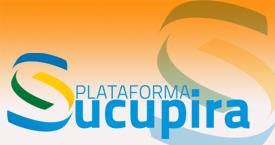Authors' contributions
At the time of submission, the submitting author is required to complete a statement describing the effective contribution of each author to the submitted manuscript, in accordance with the CRediT Taxonomy. The purpose of this taxonomy is to promote transparency regarding the contributions of authors to scientific work.
The CRediT Taxonomy defines 14 types of collaboration, which must be attributed to the authors according to their participation in the development of the submitted text:
- Conceptualization: Formulation or evolution of overarching research goals and aims.
- Data curation: Management activities to annotate (produce metadata), scrub data, and maintain research data (including software code, where necessary for interpreting the data itself) for initial use and later reuse.
- Formal analysis: Application of statistical, mathematical, computational, or other formal techniques to analyze or synthesize study data.
- Funding acquisition: Acquisition of the financial support for the project leading to this publication.
- Investigation: Conducting a research and investigation process, specifically performing the experiments or data/evidence collection.
- Methodology: Development or design of methodology; creation of models.
- Project administration: Management and coordination responsibility for the research activity planning and execution.
- Resources: Provision of study materials, reagents, materials, patients, laboratory samples, animals, instrumentation, computing resources, or other analysis tools.
- Software: Programming, software development, designing computer programs; implementation of the computer code and supporting algorithms; testing of existing code components.
- Supervision: Oversight and leadership responsibility for the research activity planning and execution, including mentorship external to the core team.
- Validation: Verification, either as part of the activity or separately, of the overall reproducibility/replicability of results/experiments and other research outputs.
- Visualization: Preparation, creation, and/or presentation of the published work, specifically visualization/presentation of the data.
- Writing – original draft: Preparation, creation, and/or presentation of the published work, specifically writing the initial draft (including substantive translation).
- Writing – review & editing: Preparation, creation, and/or presentation of the published work by those from the original research group, specifically critical review, commentary, or revision—including pre- or post-publication stages.
The absence of a contribution that fits at least one of the aforementioned forms of collaboration disqualifies the indication of authorship for a submitted or published manuscript, constituting non-compliance with the publication policies and ethical guidelines of the RJTDH










